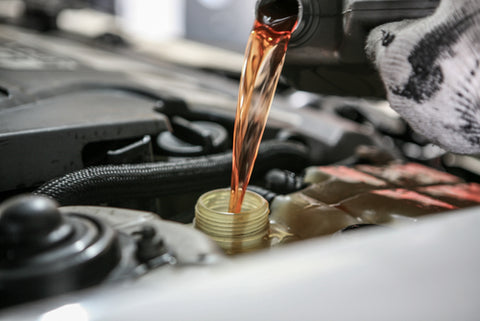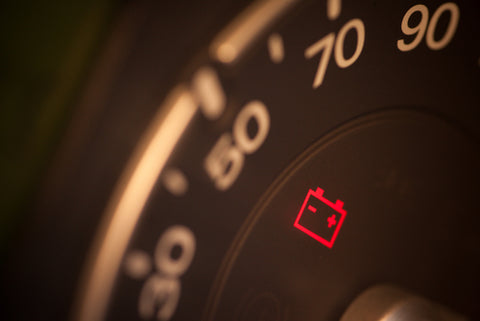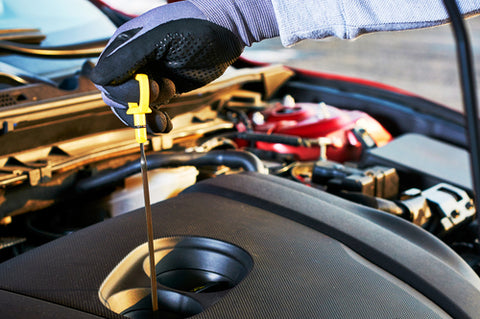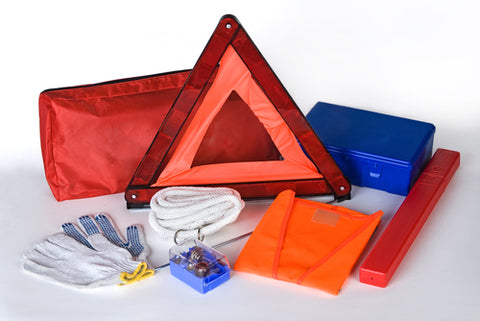The time to get your car prepared for winter is now before the snow begins to fall. It might seem like a daunting task, but it’s necessary to keep your car in proper shape. There’s no worse feeling than being stranded somewhere or getting into an accident because of something you could have prevented. Taking care of your tires and simple things can make a huge difference in the longevity of your vehicle. Here are five things you should do to get your car winter ready.

-
Tires Go Round and Round
Tires should be your first concern when prepping your car for winter. Having a set of winter and summer tires is a great way to extend the life of both sets. Just make sure to swap from your summer set to your winter set before the first snow falls. If you have seasonal tires, now is the time to make an appointment to switch them. With your winter tires, it’s always better to have them on a couple of weeks early than too late. Just don’t leave them on year-round.
If you don’t have seasonal tires, now is the time to check two things: tread and pressure. You don’t want your tires to not have enough tread on them. Tread equals traction, and the more you have the better, especially in the slick driving conditions that winter brings. To test your tire’s tread, put a Lincoln penny head first into the tread of your tire. As long as you can’t see the top of Lincoln’s head, your tires are good. However, if you can see the top of his head or you’re getting close, you should consider getting a new set.
When it comes to pressure, you want to ensure that your tires are inflated properly. Overinflating them causes less of your tire to contact the road, while under inflating them can damage the sidewalls and cause a critical blowout when you least expect it.

-
Don’t Forget the Coolant
Your car’s coolant is as important during the winter months as it is during the summer. Remember that you can’t run with just water in your radiator. You also shouldn’t just put antifreeze in there. The ratio of antifreeze to water is important for the safety of your car. You should aim for a mix of 50-50. During the winter, the water will pull the heat away from your engine and keep it from breaking. At the same time, the glycol in the antifreeze will keep the mixture from turning to ice.
Another thing the antifreeze does is slow corrosion in your car’s coolant system. Without the corrosion inhibitors in antifreeze, your car’s coolant system can begin to break down internally, leading to an expensive repair.
Many shops sell coolant that has already been pre-mixed. However, the easiest way to make your own is to save an old antifreeze bottle. Then when you buy a new one, pour half into the old container. Then fill both with water and shake thoroughly.

-
Check Your Battery
There’s nothing worse than getting stranded somewhere in the dead of winter because your car won’t turn over. A vital part of prepping your car for winter is checking your battery before the ice and snow start falling. Most major auto repair shops will check your battery for free so you can see if you should replace it. As a general rule of thumb, if it’s been longer than three years since your last battery replacement, have it checked. It’s far better to be safe than sorry.
While you’re having the battery checked, inspect the other parts of the electrical system. Look at the cables and connections to ensure there’s no corrosion or buildup. If you see any white powder, clean your contacts with a wire brush. Lift the battery and check the tray and the hold down brackets as well. Any corrosion should be brushed and wiped clean.

-
Oil Change
Keeping up on oil changes is especially important in the winter months. Current recommendations are that you change your oil every 3000 to 5000 miles or every three months, whichever comes first. When getting your oil changed, pay attention to the weight of the oil being put in.
Oils are rated according to a system that determines their viscosity, or how thick they are. You probably already know the ratings, but you might not know what they mean. Motor oils are rated at Xw-Y, where X and Y both represent a number, for example, 5w-40 or 10w-30. The number in front is how well the oil performs during the winter – the w means winter, not weight. The lower that number, the better the oil works at lower temperatures. The number after the dash indicates how well the oil performs at 100 degrees Celsius. The lower the number, the thinner the oil is. Most manufacturers recommend a 5w-30 for optimum protection.

-
Emergency Kit
Nobody wants to think about it, but accidents happen and a sudden winter storm can leave you stranded where you least expect it. As part of your winter preparations for your car, creating a basic emergency kit is essential. Having one in your car can be the difference between life and death during a crisis.
When you prep a kit, keep the kit in the passenger section of your car. That way you still have access to it if you can’t get to the trunk. You can store the emergency kit in a plastic tub or a small duffel bag. Your emergency kit should contain at a bare minimum the following items.
- First aid kit with a three day supply of medication for everyone in the family
- A small pocket knife or multitool
- Two blankets. To conserve space, thin mylar blankets are exceptionally effective
- Flashlight with two sets of batteries stored outside of the flashlight
- One gallon of bottled water
- Energy bars and snacks
- Clean and dry socks, hats, and gloves
- Emergency flares
- A snow shovel
- Portable battery pack for your cell phone with appropriate cable
Additional items that should be considered as space allows are the following.
- Candles and waterproof matches
- A window scraper and small broom
- Salt or cat litter for traction
- Jumper cables
- A battery or hand-crank powered radio


